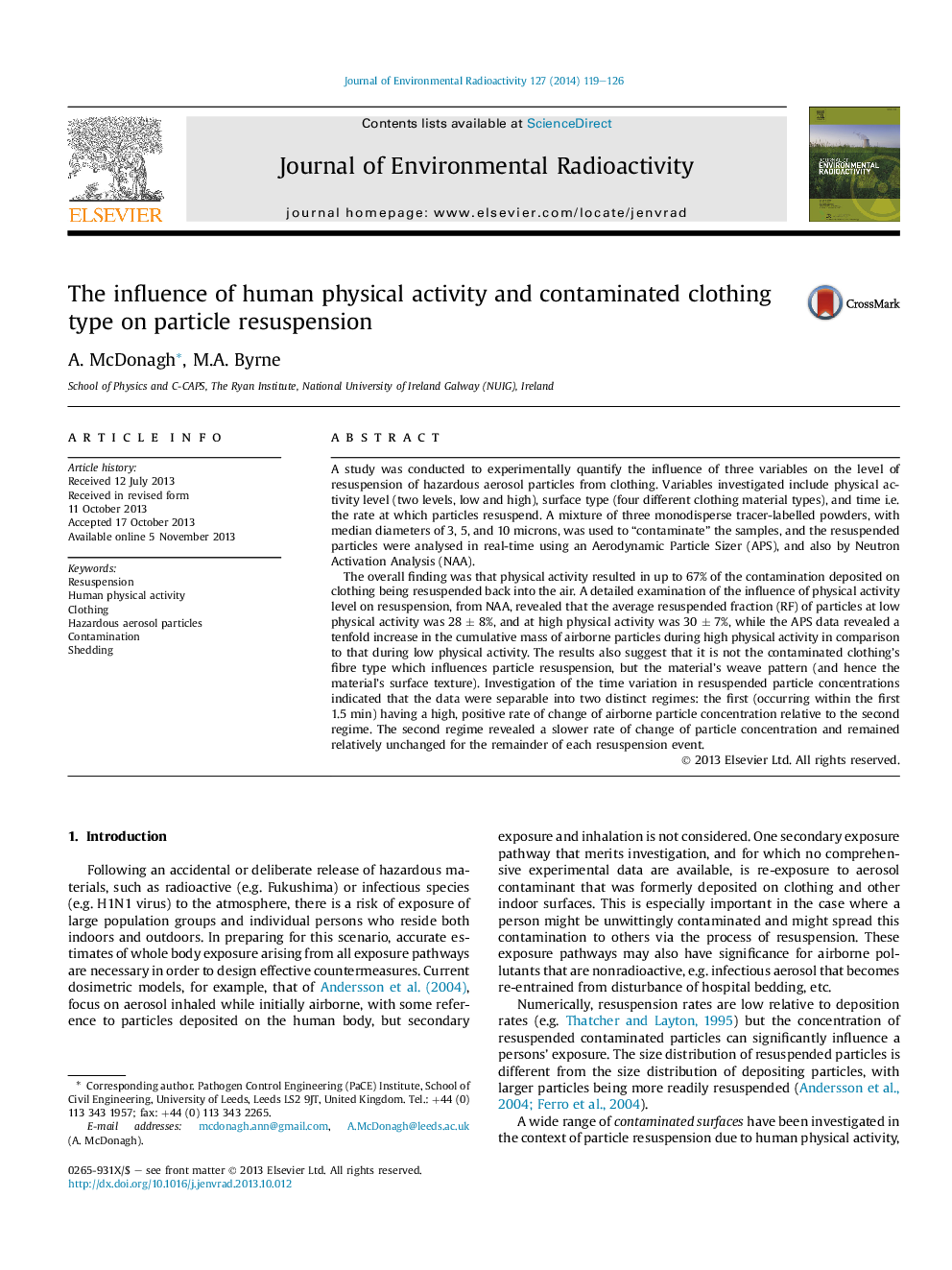| Article ID | Journal | Published Year | Pages | File Type |
|---|---|---|---|---|
| 8083225 | Journal of Environmental Radioactivity | 2014 | 8 Pages |
Abstract
The overall finding was that physical activity resulted in up to 67% of the contamination deposited on clothing being resuspended back into the air. A detailed examination of the influence of physical activity level on resuspension, from NAA, revealed that the average resuspended fraction (RF) of particles at low physical activity was 28 ± 8%, and at high physical activity was 30 ± 7%, while the APS data revealed a tenfold increase in the cumulative mass of airborne particles during high physical activity in comparison to that during low physical activity. The results also suggest that it is not the contaminated clothing's fibre type which influences particle resuspension, but the material's weave pattern (and hence the material's surface texture). Investigation of the time variation in resuspended particle concentrations indicated that the data were separable into two distinct regimes: the first (occurring within the first 1.5 min) having a high, positive rate of change of airborne particle concentration relative to the second regime. The second regime revealed a slower rate of change of particle concentration and remained relatively unchanged for the remainder of each resuspension event.
Related Topics
Physical Sciences and Engineering
Energy
Nuclear Energy and Engineering
Authors
A. McDonagh, M.A. Byrne,
